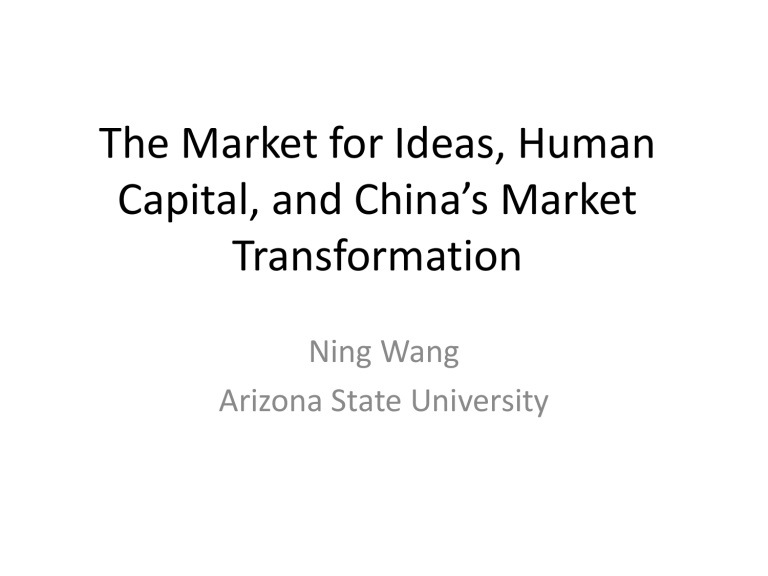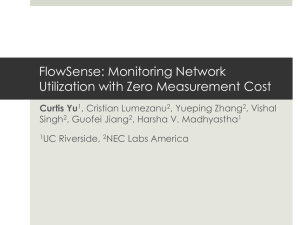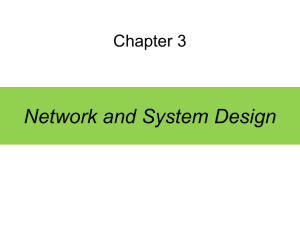Buffalo conference W.. - Center of Excellence on Human Capital

The Market for Ideas, Human
Capital, and China’s Market
Transformation
Ning Wang
Arizona State University
Co-growth of Knowledge and
Human Capital
• The explosive growth of knowledge is a defining feature of our modern life.
• Compulsory schooling, universal literacy and immunization, professional training and increasing access to higher education have given rise to wide and rapid growth of human capital worldwide.
• The two trends reinforce each other.
Diversity Persists
• Explaining such persisting diversity has become a core challenge in economic research.
– Lucas (1988). “Once one starts to think about them, it is hard to think about anything else” (p. 5)
– Acemoglu and Robinson (2012): Why some nations succeed and others fail?
The market for ideas is a missing link.
• The market for ideas explains some variations in economic performance.
• It determines how and what knowledge is produced, disseminated, and utilized, and by whom.
What are Ideas?
• All products that are created by and can be separated from the human mind.
– Ideas make up “world 3” (Popper 1978); they are objective.
• We are mainly concerned with two types of ideas.
– Scientific knowledge: theories about what reality (nature, life, and human society) is and explanations of how it works (e.g., Deutsch 2011).
– Technologies (e.g., Arthur 2009): applications of scientific knowledge for human purposes, including cars, MRIs, and
• institutions – rules informed by social sciences knowledge to structure human society.
• policies – programs based on scientific knowledge to improve the working of human society.
the Market for Ideas
• The market for ideas is a factor market.
– It is not concerned with political freedom.
– It is a basic economic concept.
– The increasing role of knowledge in the economy makes the market for ideas increasingly important.
– The market for ideas has to be created.
Market for Ideas: Premise I
• Ideas are an ubiquitous, if invisible, factor in all production.
– Aggregate production function says nothing about what is produced in the economy.
– Ideas determine what is produced; other factors of production determine how much is produced.
– The growth of knowledge makes us not only more productive but also more creative (able to produce what could not before).
Market for Ideas: Premise II
• We have to come to terms with the Hayekian challenge.
– The paradigmatic economic problem is not choice, but the utilization of knowledge (Hayek 1937,
1945).
– The division of labor and division of knowledge are the two sides of the same coin: production for exchange.
Market for Ideas: Premise III
• Ideas compete for attention and adoption; they are rivalrous.
– New growth theory (e.g., Romer 1986, 1990, 2010;
Lucas 2009) has emphasized non-rivalry as a distinctive feature of ideas.
– Everyone can simultaneously enjoy the music of
Beethoven, appreciate the insight of the “invisible hand”.
– Yet, ideas can be strictly rivalrous to each other in a basic economic sense – once Mao’s China embraced socialism, it denied to itself the possibility of experimenting with the market.
What Makes Ideas Unique?
• Romer (1993), Jones (2005): Ideas v. Objects
– Objects (other factors of production and all conventional products) are rivalrous
– Ideas are non-rivalrous
– Ideas: instructions or recipes that can be simultaneously used by many people.
“Ideas Do Not Die”
• Ideas are preservable.
– Objects wear out in utilization.
– Ideas gain life in utilization; ideas no longer in use are defunct.
• Many idea-holders would rather like their ideas being stolen than being ignored.
• Ideas can be shared and re-used infinitely over time.
Ideas Are Never Perfect, but Always
Open to Improvement
• Ideas are remediable (e.g., Popper 1957;
Bateson 1972; Kauffman 2008; Deutsch 2011).
– Our knowledge on any subject is limited, incomplete and imperfect. But it can be improved in ways that we cannot imagine in advance.
• Life and knowledge are two forces counteracting the law of entropy.
– “It’s all gloom and doom”, except for life.
– Human life is conditioned by ideas.
Growth of Ideas
• We need ideas to produce ideas.
– Input ideas determine what ideas get produced; human capital and research funding determine how much or how fast ideas get produced.
• Ideas are stepping stones.
– Novel ideas often find wide applications outside the field where they originated.
• The growth of ideas bears little resemblance to the accumulation of capital.
– The growth of knowledge is better described as good ideas replacing bad ideas.
The Market for Ideas
• Proponents
– Ideas are a critical factor of production.
– Good ideas have to be selected.
– The market for ideas as a factor market assures best utilization of ideas.
• Skeptics
– A market for ideas is doomed because of market failure
• P ≠ MC
• Information asymmetry is pervasive.
Market for Ideas as a Factor Market
• The market for ideas is an atypical factor market.
– It facilitates the free movement of ideas to assure best utilization.
• Free flow of ideas are necessary and desirable for the growth of ideas.
– Ideas are preservable; ideas no longer in use are dead.
– Ideas are remediable through utilization.
• Competition in the Hayekian (1968) sense is inevitable.
– Ideas are rivalrous; selection of ideas is as important as production of ideas.
– Better ideas emerge out of competition.
What Does the Market for Ideas Do?
• A platform for collaborative competition: exploration into the unknown
• Utilization of knowledge in novel ways creates innovation, introducing new products to the economy.
• New ideas push outward the technology frontier.
From Economics of Knowledge to the
Structure of Production
• Knowledge and GDP Growth
– Machlup (1962) estimated that the knowledge sector made up 29% of the American GDP.
– Growth accounting puts the “knowledge factor” as responsible for 85% of economic growth.
– New growth theory (e.g., Romer, Lucas)
• Market for ideas & the structure of production
(Coase and Wang 2011)
– Ideas determine the composition of the economy.
– The market for ideas determines the growth of knowledge and its diffusion.
The Market for Ideas and the State
• The state strengthens the market for ideas by
– opening up the market to private actors
• ending state monopoly in the production and dissemination of ideas, encouraging private schools, universities, research institutions, academic societies, and free press
– cultivating the market-friendly mentality
• no final truth; ideas are infinitely remediable
• tolerance
The Market for Ideas versus Patents
• All impediments to the free flow of ideas create economic inefficiency.
• Conventional economic analysis of patents
(e.g., Nordhaus 1969) underestimates the welfare loss.
– High incentives to innovation
– Monopoly distortions
• Boldrin and Levine (2008) shows on empirical grounds patents slow down innovation.
China’s Market Transformation:
Rivalry of Ideas
• The failure of Mao’s radical ideology opened
China to pragmatism.
• The failure of socialism opened China to capitalism.
– The failure of state enterprises opened China to private entrepreneurship.
– The failure of central planning opened China for regional competition.
China’s Market Transformation:
Catching-up Growth
• In a technologically dynamic economy, most firms do not operate on technology frontier.
– Catching –up growth is ubiquitous.
– Big gap between frontier production function and aggregate production function
• Firms in technologically dynamic sectors can grow fast.
• The globalization of the market for ideas allows
Chinese firms to jump to the technology frontier.
China: its Rise, Decline and Revival
• A market for ideas emerged in China at the time of
Confucius.
• When a leading civilization closes its mind, the growth of new ideas is oppressed. The economy slows down and and it gradually loses its leading edge.
• When a late comer speeds up its growth of knowledge, first by importing and later by domestic production, the economy catches up. Economic growth stimulates further growth of ideas, which opens up more opportunities for technological innovation and economic growth. This vicious cycle creates dynamic increasing returns and sustains economic growth.











